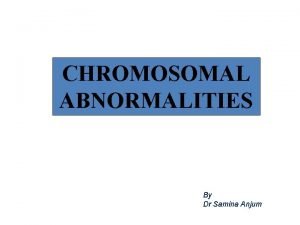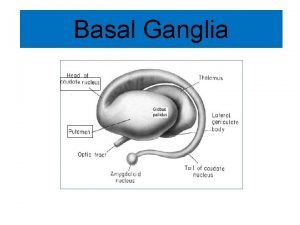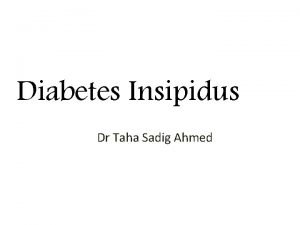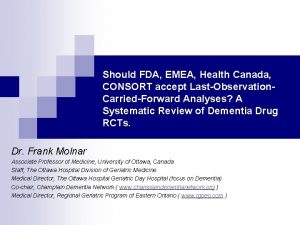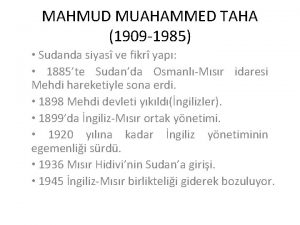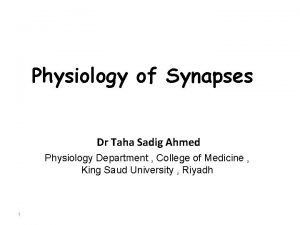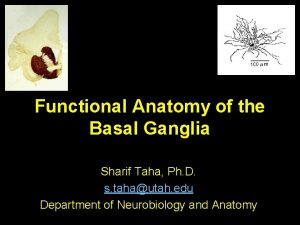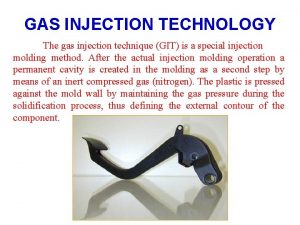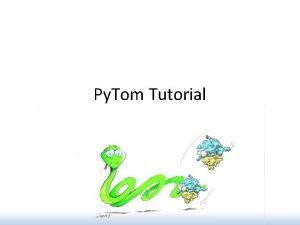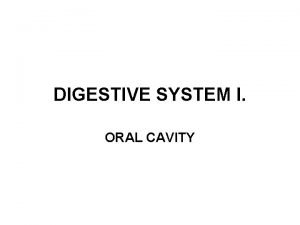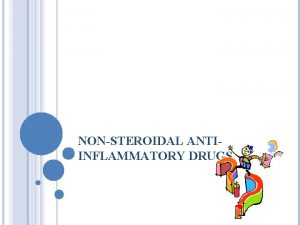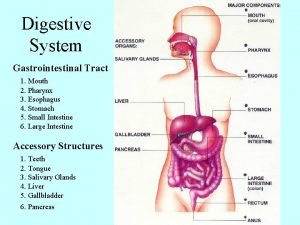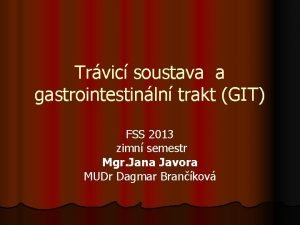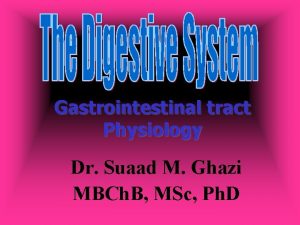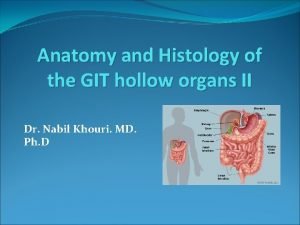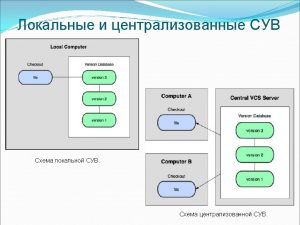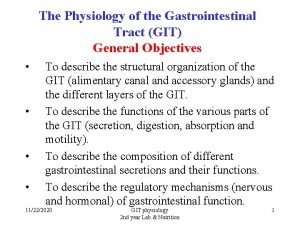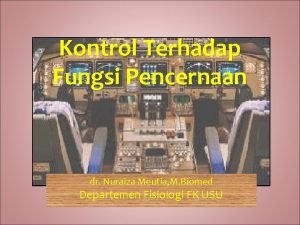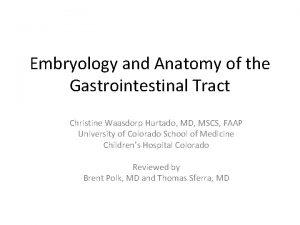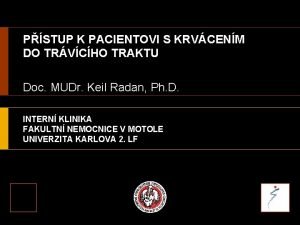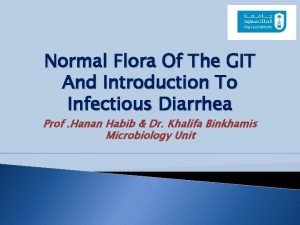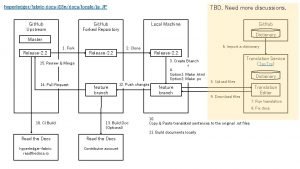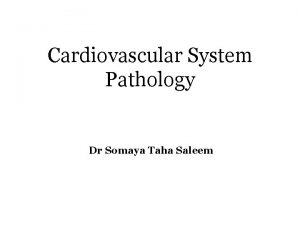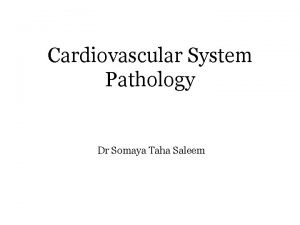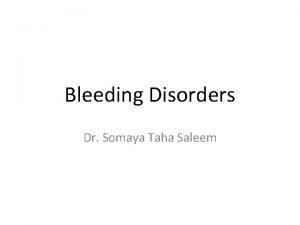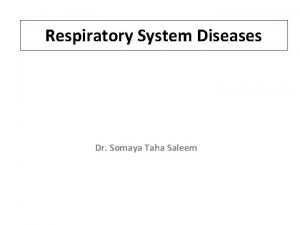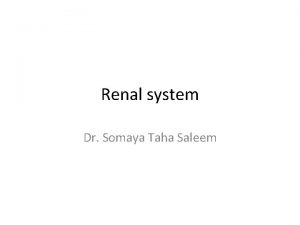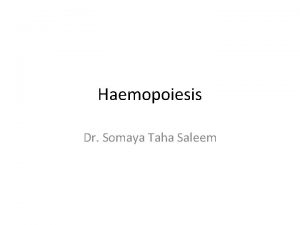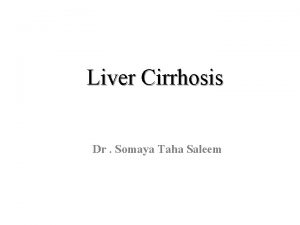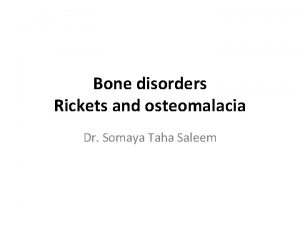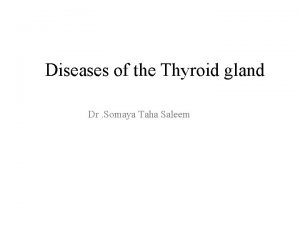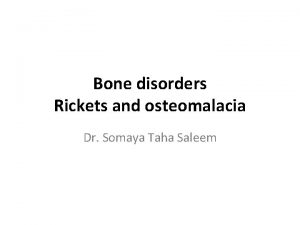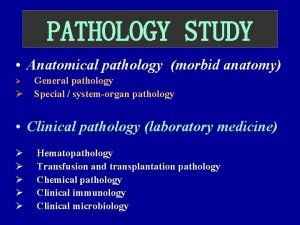GIT Pathology Dr Somaya Taha Saleem GIT Pathology

























































- Slides: 57

GIT Pathology Dr. Somaya Taha Saleem


GIT Pathology Oral cavity Esophagus Congenital Stomach Inflammation s Small intestine Functional Large intestine Vascular Peritoneum Tumors Dysphagia Upper GIT bleeding Malabsoptio n Abd. Pain Abd mass Lower GIT bleeding

Key Concepts • Diseases of the gastrointestinal tract and its accessory organs interrupt the body’s normal cycle of digestion, absorption, and metabolism.

Disorders of Oral Cavity and Salivary Glands • Tongue and oral cavity nodules/ulcers. • Tongue and oral cavity plaques. • Parotid gland swelling.

Oral Cavity 1 -Inflammation ( Stomatitis) • Infections : HSV, Candida, CMV… • Glossitis : Iron deficiency … • Aphsus ulcers…. Candida HSV

Oral Cavity 2 -Precancerous Conditions Leukoplakia: – Whitish plaque – Causes : tobacco, irritation, HPV, – Can be hairy in HIV patients. • Erythroplakia – Red, velvety plaque. – More atypia

3 -Oral Cavity Tumors Odentogenic tumors (Teeth) – Ameloblastoma – Odentoma – Others Squamous cell carcinoma • Causes: tobacco, HPV, genetic • Pathology: S site: anterior 1/3 of tongue, floor , lip S Shape : nodule or ulcer with everted edge S Well differentiated SSC

Salivary Gland Causes of Salivary Gland Swelling • Inflammation ( sialadenitis) – Bacterial (Supporative) – Viral ( mumps) – Immune ( Sjögren syndrome) • Mickolicz syndrome • Calculi ( sialolethiasis) • Tumors

Salivary gland Tumors Benign Tumors : • Pleomorphic adenoma – Called mixed salivary tumor – The most common( 65%) – Mainly in parotid gland – Micro: mixed cell types – Recur after surgery • Warthin tumor ( adenolymphoma) • Oncocytoma

Salivary Gland Tumors Malignant tumors • Adenocarcinoma (10%) • Mucoepidermoid Ca (15%) • Acinic cell Ca (5%) • Adenoid cystic carcinoma • Others

Oesophagus • Epithelium lined muscular tube from 6 th cervical – 11 th thoracic vertebra Function: • Conduction of food and drink • Sphincters at top and bottom

Clinical features • Heartburn (retrosternal burning pain) • Dysphagia (difficulty in swallowing) • Inflammation • pain • Hematemesis – (vomiting of blood)

Diseases are subdivided into: • Congenital • Mechanical disorders • Inflammation • Esophageal varices • Oesophageal neoplasms

Congenital • Ectopic tissue rest (e. g. gastric mucosa in the upper third of the esophagus) • Atresia – often with fistula to trachea (a segment of the esophagus is represented by only a thin , noncanalised cord, with a proximal blind pouch connected to the pharynx and a lower pouch leading to the stomach. • Tracheoesophageal fistula.

• Oesophageal ring (concentric plates of tissue protruding into the lumen of the distal oesophagous. • Oesophageal webs (ledge like protrusions of the mucosa into the oesophageal lumen ) • Duplication.

mechanical disorders 1 -Hiatus Hernia • anatomical abnormality in which part of the stomach protrudes through the diaphragm and up into the chest.

Hiatal Hernia • Two types – 1. Sliding • Stomach slides into thoracic cavity when supine, goes back into abdominal cavity when standing upright • Most common type – 2. Paraesophageal or rolling • Esophageal junction remains in place, but fundus and greater curvature of stomach roll up through diaphragm

Hiatal Hernia Etiology and Pathophysiology • Cause is unknown • Many factors involved – Structural changes • Weakening of muscles in diaphragm – Increased intra abdominal pressure • Obesity • Pregnancy • Heavy lifting - Increasing age - Congenital weakness

Clinical Manifestations : • Most common abnormality found x-ray of upper GI • More common in older adults and in women • May be asymptomatic • Symptoms include – Heartburn • After meal or lying supine – Dysphagia Diagnosis : – Barium swallow – Endoscopy

Complications • • • GERD Esophagitis Hemorrhage from erosion Stenosis Ulcerations of herniated portion Strangulation of hernia

Achalasia – Motility disorder characterised by absence of oesophageal failure of lower oesophageal sphincter to relax on swallowing’ – decrease or loss of myenteric ganglion cells. - All age , majority between 20 to 40 years – Dysphagia for solids mainly. – Regurgitation (60%-90%), – chest pain (50% -75%), – weight loss, – recurrent aspiration.

Esophageal Diverticula outpouching of the alimentary tract ( true contains all visceral layers , false diverticulum contains mucosa and submucosa only ) • Occur in three main areas – Zenker’s diverticulum • Most common location (immediately above UES), – Traction diverticulum • Near esophageal midpoint – Epiphrenic diverticulum • Above the LES

Sites for Occurrence of Esophageal Diverticula

Esophageal Varices • Dilated tortuous veins in lower portion of esophagus • Causes : portal hypertension • Common complication of liver cirrhosis • Presentation : hemoptysis


Inflammation (esophagitis) • Acute infective – Herpes virus, Candida. Both seen most commonly in immunosuppressed. • Ingestion of corrosives • Chronic reflux through lower oesophageal sphincter

Gastroesophageal reflux disease (GERD) Caused by constant regurgitation of acid gastric contents into lower esophagus – Risk factors : Pregnancy, obesity, vomiting, or nasogastric tubes – Constant irritation and inflammation (esophagitis) – Stenosis most common complication • Classic symptom of GERD: frequent and severe heartburn

Consequences of reflux oesophagitis • Ulceration haemorrhage • Stricture • Glandular metaplasia (Barrett’s oesophagus) • Carcinoma

Barrett’s oesophagus • Columnar epithelial cells in lower oesophagus • Variable extent • Presence of goblet cells “intestinal metaplasia” • risk of progression to dysplasia/cancer

Oesophageal neoplasms • Benign tumours (rare): • Malignant tumours Presenting symptom - dysphagia

Oesophagus neoplasm • Benign tumours; Leiomyoma, squamous papilloma , fibrous polyp, lipoma, haemagioma, etc • Malignant tumours; – Carcinoma, Squamous carcinoma, Adenocarcinoma leiomyosarcoma, fibrosarcoma, melanoma

Carcinoma of oesophagus • Risk factors; alcohol, tobacco, vitamin and mineral deficiency, strong family history, multiple cancers, especially head and neck cancers, corrosive esophagitis, Barrett’s esophagus, achalasia, Plummer-Vinson syndrome

Carcinoma of oesophagus • S&S; None, dysphagia, wt. Loss, chest pain, retrosternal pain, feeling of obstruction, hemoptysis. • 5 year survival rate is 6%-9% • Assessment; Radiologic: plain and Barium studies, CT scan, MRI • Endoscopy; rigid and flexible, endoscopic ultrasound

Carcinoma of oesophagus Barium swallow

Squamous carcinoma • Often large exophytic occluding tumours • Invasive disease preceded by dysplasia and carcinoma in situ

Adenocarcinoma • Occurs in lower oesophagus • Often associated with Barrett’s oesophagus (progresses through dysplasia to cancer)

Clinical course of oesophageal cancer • Tumours have commonly spread to regional nodes and/or liver at presentation • No peritoneal lining in mediastinum – local invasion (heart, trachea, aorta) often limits surgery • Treatment • Surgery • chemotherapy/chemoradiation,

DISEASES OF STOMACH

The Normal • Anatomy (5 regions) • Histology: types of cells – Parietal , chief, G cell, mucinous cells • Physiology – Acid secretion – Mucosal protection

Gastric Disorders • Congenital anomalies – Hernia – Heterotopia: pancreatic tissue in stomach – Congenital Pyloric Stenosis • Gastritis • Peptic ulcers diseases • Gastric tumors

GASTRITIS • ACUTE • CHRONIC • AUTOIMMUNE

1 - Gastritis • Inflammation of the gastric mucosa • Types : Acute, chronic Acute gastritis • Causes: – NSADs (Aspirin) – Alcohol, diet, smoking, …. • Pathology: – Hyperemia, neutrophils, odema, errosion

Acute Gastritis Acute mucosal inflammatory process, usually of a transient nature. is an important cause of acute gastrointestinal bleeding. 1. Epigastric pain with 2. dyspepsia , nausea and vomiting. 3. Hematemesis coffee ground vomiting, Melina

Chronic Gastritis: Presence of chronic inflammatory changes in the mucosa leading eventually to mucosal atrophy and epithelial metaplasia. Types of Chronic Gastritis: • A – autoimmune - type A • B – bacterial (helicobacter)- type B • C – chemical- type C

Helicobacter pylori • Causes 80% of gastric peptic ulcers • Causes 100% of duodenal peptic ulcers • Causes chronic gastritis • Causes gastric carcinomas • Causes MALT lymphomas

Clinical Features 1. Upper abdominal discomfort 2. Nausea 3. Vomiting. 4. When severe parietal cell loss occurs in autoimmune gastritis, 5. Development of peptic ulcer and gastric carcinoma.

Consequences of gastritis • Peptic ulcer disease (Helicobacter) • Adenocarcinoma (all types)

Peptic ulcer disease • A surface breach of mucosal lining of GI tract occurring as a result of acid and pepsin attack • Sites: – Duodenum (DU) – Stomach (GU) – Oesophagus Acute & Chronic peptic ulcer

Acute gastric ulcer • Called gastric erosion • Causes: – NSADs ( Asprin) – Stress ( burn) – head injery ( Curling ulcer)

Chronic Peptic Ulcers Chronic , often solitary, lesions that occur in any portion of the gastrointestinal tract exposed to the aggressive action of acidic peptic juices. Male/female ratio for duodenal ulcers is about 3: 1.

Pathogenesis • Imbalance between invasive and protective factors. y Damage H. Pylori NSADs Smoking Hyperacidit Psychologi cal Defense Mucus secretion Bicarbonate Prostaglandi n Blood flow

Clinical Features 1. Dyspepsia Epigastric pain. 2. Nausea, vomiting and significant weight loss. 3. Bleeding : coffee ground vomiting black stool ( melena)

Complications • Massive bleeding ( hypovolemia) • Chronic bleeding ( anemia) Perforation ( peritonitis) occurs in about 5% of patients. • Scaring ( hourglass deformity) • Malignant transformation, occurs in about 2% of patients.

GASTRIC TUMORS • BENIGN: – POLYPS (nodule or mass that projects above the level of the mucosa). – LEIOMYOMAS – LIPOMAS • MALIGNANT – ADENOCARCINOMA – LYMPHOMA

Treatment : Chemotherapy. Surgical removal.

Thank you
 Raspberry pi php install
Raspberry pi php install Somaya arianfar
Somaya arianfar Dr saleem wani
Dr saleem wani Samir saleem
Samir saleem Ranim saleem
Ranim saleem Angela laws
Angela laws Dr samina saleem
Dr samina saleem Saleem beebeejaun
Saleem beebeejaun Chromosome deletion definition
Chromosome deletion definition Samina saleem
Samina saleem Taha kass-hout
Taha kass-hout Haithem e taha
Haithem e taha Mjdah
Mjdah Lentiform nucleus location
Lentiform nucleus location Psychogenic adipsia
Psychogenic adipsia Taha kass-hout
Taha kass-hout Taha kass-hout
Taha kass-hout Taha hussein challenges
Taha hussein challenges Mahmud muhammed taha
Mahmud muhammed taha Synapse
Synapse Taha havakhor
Taha havakhor Sharif taha
Sharif taha Gas git
Gas git Git hub desktop
Git hub desktop Gmail
Gmail Git
Git Plica triangularis and plica semilunaris
Plica triangularis and plica semilunaris Rapidjson null
Rapidjson null Git flic
Git flic Git 101 tutorial
Git 101 tutorial Git
Git Excoriation of git
Excoriation of git Git gastrointestinální trakt
Git gastrointestinální trakt Brush border enzymes
Brush border enzymes Git gastrointestinální trakt
Git gastrointestinální trakt Excoriation of git
Excoriation of git Valve github
Valve github Git infirmier
Git infirmier Global user
Global user Git flow
Git flow Git layers
Git layers Xkcd git commits
Xkcd git commits Peosinogen
Peosinogen Git
Git Git hormones
Git hormones Blood supply of celiac trunk
Blood supply of celiac trunk Eecs483 git
Eecs483 git Krvaceni do git
Krvaceni do git Piriformis papilla
Piriformis papilla Julien seiler
Julien seiler Normal flora of git
Normal flora of git Git rebase vs merge
Git rebase vs merge Git
Git Tbd git
Tbd git Scott hanselman github
Scott hanselman github Tweak hub.io
Tweak hub.io Jenkins violations plugin
Jenkins violations plugin Whats git hub
Whats git hub








